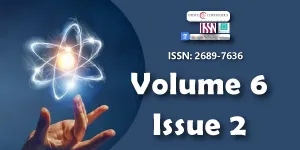All physical information is discretely connected from the beginning and all geometrical appearance is a delayed statistical consequence
Main Article Content
Abstract
Information is physically measurable as a selection from a set of possibilities, the domain of information. This defines the term "information". The domain of the information must be known together reproducibly beforehand. As a practical consequence, digital information exchange can be made globally efficient, interoperable, and searchable to a large extent by online definition of application-optimized domains of information. There are even more far-reaching consequences for physics. The purpose of this article is to present prerequisites and possibilities for a physical approach that is consistent with the precise definition of information. This concerns not only the discretization of the sets of possible experimental results but also the order of their definition over time. The access to or comparison with the domain of information is more frequent, the earlier it was defined. The geometrical appearance of our space is apparently a delayed statistical consequence of a very frequent connection with the common primary domain of information.
Downloads
Article Details
Copyright (c) 2023 Orthuber W.

This work is licensed under a Creative Commons Attribution 4.0 International License.
Licensing and protecting the author rights is the central aim and core of the publishing business. Peertechz dedicates itself in making it easier for people to share and build upon the work of others while maintaining consistency with the rules of copyright. Peertechz licensing terms are formulated to facilitate reuse of the manuscripts published in journals to take maximum advantage of Open Access publication and for the purpose of disseminating knowledge.
We support 'libre' open access, which defines Open Access in true terms as free of charge online access along with usage rights. The usage rights are granted through the use of specific Creative Commons license.
Peertechz accomplice with- [CC BY 4.0]
Explanation
'CC' stands for Creative Commons license. 'BY' symbolizes that users have provided attribution to the creator that the published manuscripts can be used or shared. This license allows for redistribution, commercial and non-commercial, as long as it is passed along unchanged and in whole, with credit to the author.
Please take in notification that Creative Commons user licenses are non-revocable. We recommend authors to check if their funding body requires a specific license.
With this license, the authors are allowed that after publishing with Peertechz, they can share their research by posting a free draft copy of their article to any repository or website.
'CC BY' license observance:
|
License Name |
Permission to read and download |
Permission to display in a repository |
Permission to translate |
Commercial uses of manuscript |
|
CC BY 4.0 |
Yes |
Yes |
Yes |
Yes |
The authors please note that Creative Commons license is focused on making creative works available for discovery and reuse. Creative Commons licenses provide an alternative to standard copyrights, allowing authors to specify ways that their works can be used without having to grant permission for each individual request. Others who want to reserve all of their rights under copyright law should not use CC licenses.
Deacon TW. What is missing from theories of information? Cambridge, UK: Cambridge University Press; 2010; 146-169.
Floridi L. Information: A very short introduction. Oxford: OUP. 2010.
Orthuber W. We can define the Domain of Information online and thus globally uniformly. Information. 2022; 13(5): 256.
Korsch HJ. Mathematik der Quantenmechanik: Grundlagen, Beispiele, Aufgaben, Lösungen. München, Germany: Carl Hanser Verlag GmbH Co KG; 2019; 78-79.
Orthuber W. A discrete and finite approach to past physical reality. International Journal of Mathematics and Mathematical Sciences. 2004; 19: 1003-1023.
Dattoli G, Chiccoli C, Lorenzutta S, Maino G, Torre A. Theory of generalized Hermite polynomials. Computers & Mathematics with Applications. 1994; 28(4): 71-83.
Salam A. Fundamental interaction. Access Science. 2020. doi: 10.1036/1097-8542.275600
Bars I, Terning J, Nekoogar F. Extra dimensions in space and time. Vol. 66. New York: Springer. 2010.
Overbye D. All the Light There Is to See? 4 x 10^84 Photons. The New York Times; 3 December 2018.
Paris MG. The modern tools of quantum mechanics: A tutorial on quantum states, measurements, and operations. The European Physical Journal Special Topics. 2012; 203(1): 61-86.
Schrödinger E. An undulatory theory of the mechanics of atoms and molecules. Physical Review, 1926; 28(6): 1049.
Leonard IE. The matrix exponential. SIAM review. 1996; 38(3): 507-512.
Richter F, Florian M, Henneberger K. Poynting's theorem and energy conservation in the propagation of light in bounded media. Europhysics Letters. 2008; 81(6): 67005.
Maxwell JC. II. A dynamical theory of the electromagnetic field. Proceedings of the Royal Society of London; 1864; (13): 531-536.
Caser S, Hilhorst, HJ. Topology of the support of the two-dimensional lattice random walk. Physical review letters. 1996; 77(6): 992.

